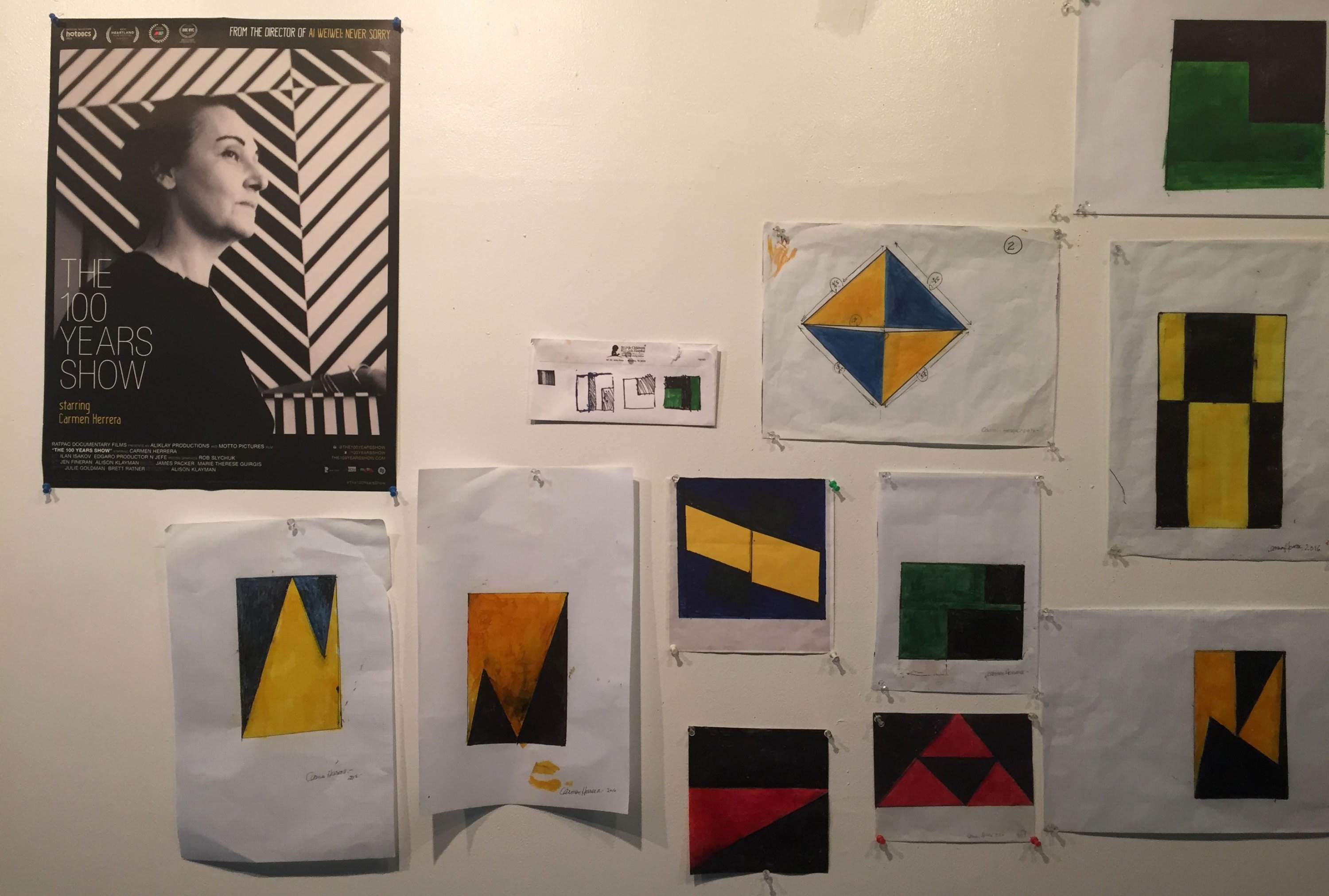
It may take 60 years to get global recognition but better late than never. Let’s pay a tribute to the Cuban-American, painter, and sculptor, the queen of hard-edge abstract forms, Carmen Herrera, who died Saturday in her New York apartment and studio where she lived for 55 years. There is no doubt that her art will live forever.
Fame reached Herrera at the age of 89. She spent over half a century developing her signature style on the abstract expressionism genre. Both being a woman and an immigrant, Herrera struggled with discrimination yet she never ceased to explore color and form.
In one of her interviews with The Guardian in 2016, "... everything was controlled by men, not just art,” she explained her dedicated practice on the path of art.
Herrera was born in 1915 at the capital of Cuba, Havana. After studying architecture at La Universidad de la Habana, she left the country with her husband amid Cuba’s political turmoil. She continued to develop her visionary abstract compositions in France, exhibiting at the Salon des Realites Nouvelles where the post-war abstract began to flourish.
Befriending famous abstract artists such as Mark Rothko, Ad Reinhardt, and Barnett Newman, Herrera moved to New York in 1954. Yet, her art did not receive a warm reception.
"I was liberated by being ignored,” she said. "I was free to do as I wished. Frankly, it never bothered me that much. It just was not my time, I guess.” Herrera enjoyed looking through the edge.

The watershed moment came to her in 2004, when she sold her work to Frederico Seve’s Latin Collector Gallery on Hudson Street. The recognition of abstract work succeded significant museum presentations including Museum of Modern Art, Walker Art Center, Hirshhorn Museum and Sculpture Garden, Boston Museum of Fine Arts, and Tate Modern.
The oeuvre of the artist, "Carmen Herrera: Lines of Sight," an exhibition that was displayed in New York City in 2014, featured more than 50 of her works. The second section of the exhibition includes "Blanco y Verde" (White and Green) series on which the green triangles meet the edge of the canvas.
Herrera, the abstract painter who has gone unnoticed in the last century, invites spectators to explore the dynamic world of geographic styles.
